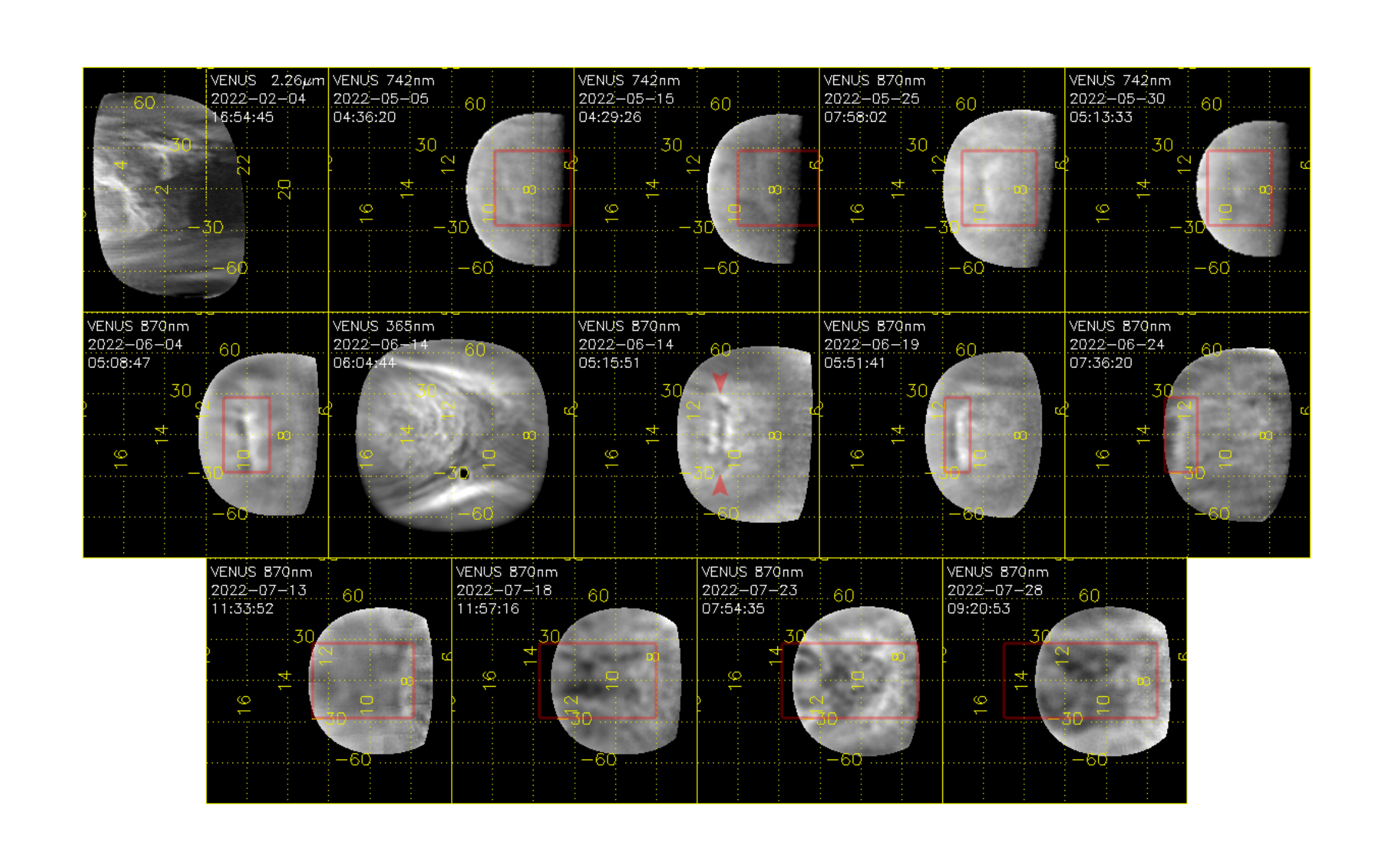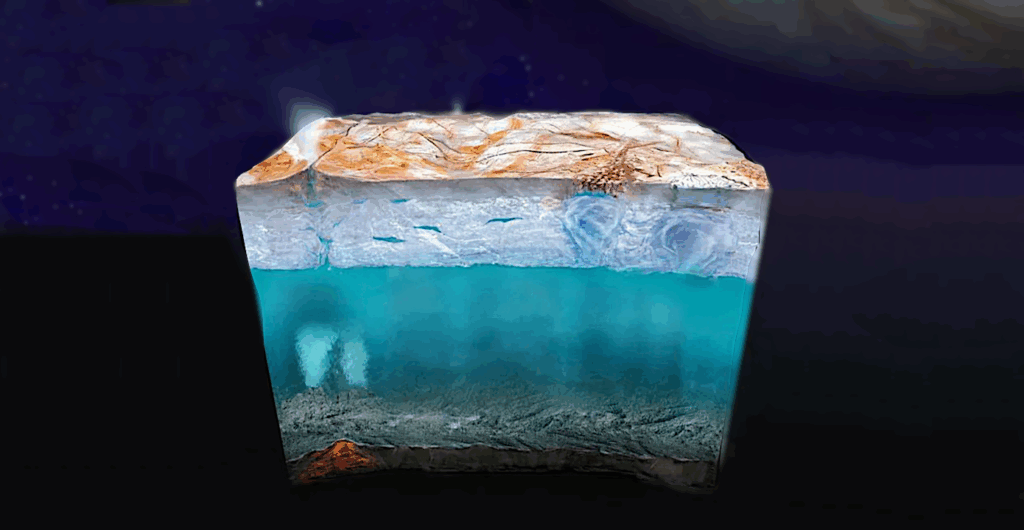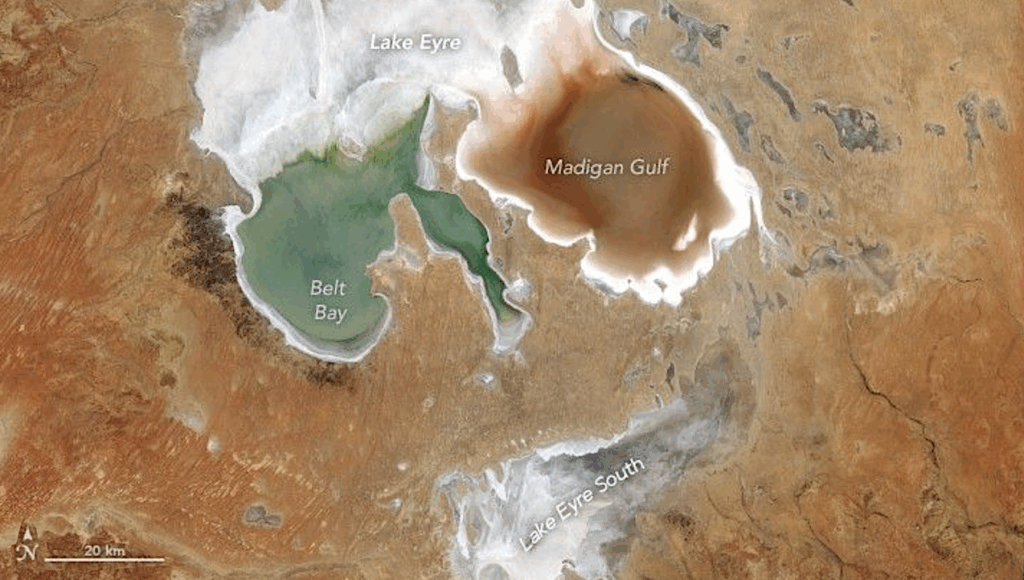The Earth-sized Exoplanet Next Door: The Venus Cloud Discontinuity in 2022

First identified in 2016 by JAXA’s Akatsuki mission, the discontinuity/disruption is a recurrent wave observed to propagate during decades at the deeper clouds of Venus (47–56 km above the surface), while its absence at the clouds’ top (∼70 km) suggests that it dissipates at the upper clouds and contributes in the maintenance of the puzzling atmospheric superrotation of Venus through wave-mean flow interaction.
Taking advantage of the campaign of ground-based observations undertaken in coordination with the Akatsuki mission since December 2021 until July 2022, we aimed to undertake the longest uninterrupted monitoring of the cloud discontinuity up to date to obtain a pioneering long-term characterization of its main properties and better constrain its recurrence and lifetime.
The dayside upper, middle and nightside lower clouds were studied with images with suitable filters acquired by Akatsuki/UVI, amateur observers and NASA’s IRTF/SpeX, respectively. Hundreds of images were inspected in search of manifestations of the discontinuity events and to measure key properties like its dimensions, orientation or rotation period. We succeeded in tracking the discontinuity at the middle clouds during 109 days without interruption.
The discontinuity exhibited properties nearly identical to measurements in 2016 and 2020, with an orientation of 91∘±8∘, length/width of 4100±800 / 500±100 km and a rotation period of 5.11±0.09 days. Ultraviolet images during 13-14 June 2022 suggest that the discontinuity may have manifested at the top of the clouds during ∼21 hours as a result of an altitude change in the critical level for this wave due to slower zonal winds.
J. Peralta, A. Cidadão, L. Morrone, C. Foster, M. Bullock, E. F. Young, I. Garate-Lopez, A. Sánchez-Lavega, T. Horinouchi, T. Imamura, E. Kardasis, A. Yamazaki, S. Watanabe
Comments: 8 pages, 4 figures, 2 animated figures, 1 table
Subjects: Earth and Planetary Astrophysics (astro-ph.EP); Atmospheric and Oceanic Physics (physics.ao-ph)
Cite as: arXiv:2302.04689 [astro-ph.EP] (or arXiv:2302.04689v1 [astro-ph.EP] for this version)
https://doi.org/10.48550/arXiv.2302.04689
Focus to learn more
Submission history
From: Javier Peralta
[v1] Thu, 9 Feb 2023 15:06:58 UTC (4,676 KB)
https://arxiv.org/abs/2302.04689
Astrobiology, exoplanet,








